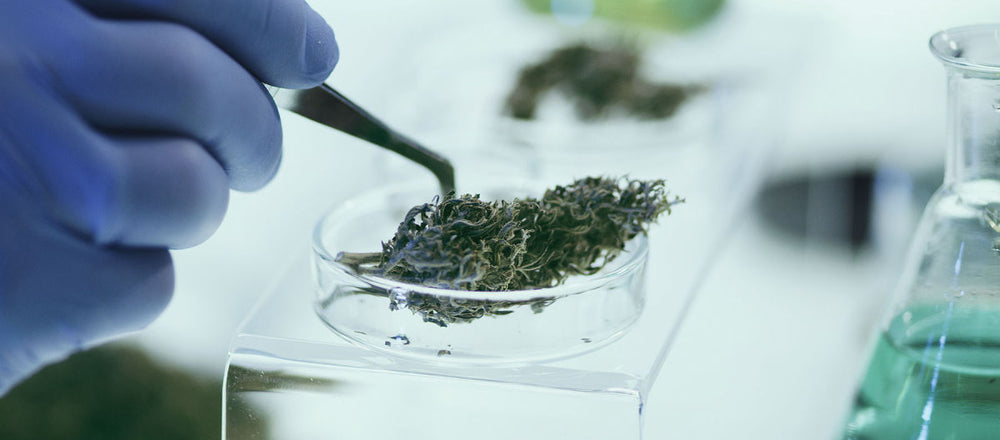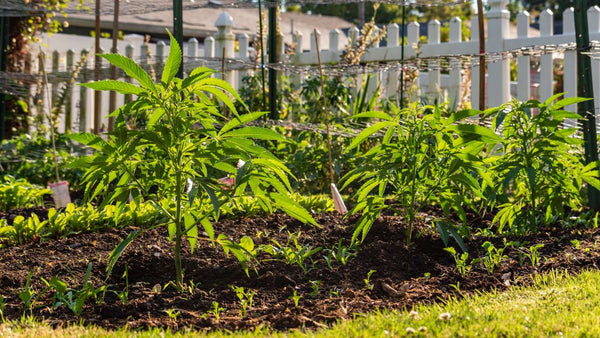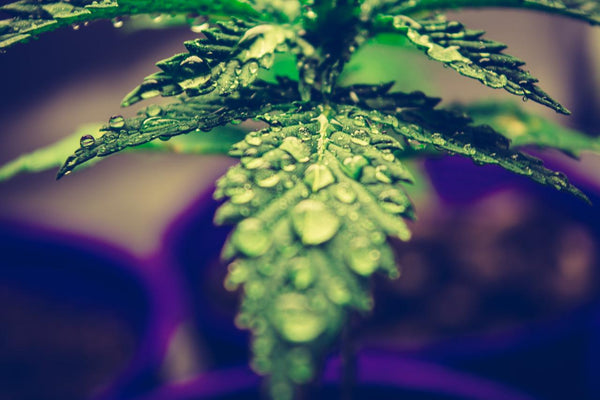As the cannabis marketplace has evolved over time, we’ve seen an increasing diversity of product types and form factors become available. This includes vapes, concentrates, edibles, water soluble powders, and seemingly countless other ways to consume cannabinoids.
While all of these form factors may seem incredibly different from one another, they are all the result of the same general process of “extraction” from the cannabis plant.
Extraction techniques can vary widely depending on the product you are trying to create. For example, HOLISTIK’s water soluble CBD Wellness powder requires a vastly different extraction method than a bottle of CBD tinctures.
What is Extraction?
According to Weedmaps, extraction is “the process by which cannabinoids and terpenes found within cannabis are recovered from the plant material.”
Extraction can be accomplished in a number of ways involving various techniques and solvents used to remove the cannabinoids and terpenes from the original plant material. It is an important process for making cannabis-derived products, because it concentrates the active ingredients into an oil or waxy-like substance that can be put into products, while removing plant material like chlorophyll and other plant material that taste gross.
There are a variety of ways that extraction can be achieved, and in this blog post we are going to explore a few of the most popular methods alongside their benefits and drawbacks.
Solvent Extraction
 Solvent extraction is the widest used cannabis extraction method, for its efficiency and overall cost. It is done by washing a chemical solvent, in most cases ethanol or butane, over the plant biomass, moving from one chamber to the other and then back again, and dissolving plant contents while leaving behind highly concentrated cannabinoids, like CBD, THC, other minor cannabinoids, and terpenes.
Solvent extraction is the widest used cannabis extraction method, for its efficiency and overall cost. It is done by washing a chemical solvent, in most cases ethanol or butane, over the plant biomass, moving from one chamber to the other and then back again, and dissolving plant contents while leaving behind highly concentrated cannabinoids, like CBD, THC, other minor cannabinoids, and terpenes.
Because these solvents are incredibly dangerous to consume, all solvent is then evaporated and remaining bits of solvent are vacuumed out, leaving behind only the concentrated cannabinoids and terpenes (tested at each step of the process to ensure no residual solvents are left). The resulting product is called a distillate and is a thick, “molasses-like” oil. While viscosity can vary depending on the nuances of the extraction process, these concentrates typically test between 80-90% THC content.
Another solvent based extraction, becoming increasingly popular in recent years, is CO2 extraction. It has emerged as one of the leading options for commercial scale cannabis extraction for two key reasons, maintaining more volatile cannabinoids and terpenes, and the flexibility it allows in creating different products with the same process.
CO2 extraction involves putting ground cannabis, typically known as “trim” into an extraction machine, then pumping massive amounts of pressurized carbon dioxide into the extractor. Due to the temperature and pressure both exceeding specific thresholds, the CO2 is “supercritical” meaning it exists as both a gas and liquid at the same time.
The supercritical CO2 interacts with the cannabis plant material, dissolving cannabinoids and carrying them to a separate part of the machine. Remaining plant material is left behind and disposed of. When the CO2 temperature is returned to normal levels, the carbon dioxide separates from the cannabinoids, leaving behind a cannabinoid concentrate.
Solventless Extraction
 A newer trend in extraction is solventless/non-solvent extraction, a machine-based extraction method that uses pressure and an agitator, such as temperature, to extract the cannabinoids from the plant. This method is particularly compelling for those looking to consume cannabis concentrates directly due to the more natural taste. However, as a raw material it is not generally preferred due to the high costs and low yields of the process.
A newer trend in extraction is solventless/non-solvent extraction, a machine-based extraction method that uses pressure and an agitator, such as temperature, to extract the cannabinoids from the plant. This method is particularly compelling for those looking to consume cannabis concentrates directly due to the more natural taste. However, as a raw material it is not generally preferred due to the high costs and low yields of the process.
After Extraction: Nano-Emulsification
Nano-emulsification is having a bit of a moment when it comes to cannabis derived products. While the extracted oily material above, produces excellent concentrates for “dabs” and vape cartridges, they aren’t quite as helpful when it comes to edibles or water-soluble products.
Nano-emulsification is a process by which to fix that. With this process, cannabinoids are typically dissolved into ethanol or a similar substance, then stirred vigorously through a machine into distilled water. The ethanol is then removed from the substance, leaving behind a stable suspension of cannabinoids within the liquids. The resulting substance can then be made into powders or bottled beverages and contains cannabinoids without the bitter plant taste.
If nano-emulsification sounds familiar to you, that is because our collection of CBD Stir STIKs are created with this methodology.
The examples described above are just the tip of the iceberg of the many types of extraction processes available for cannabis and hemp derivative products. The science behind these processes continues to advance at a rapid pace, creating more opportunities for innovative form factors and cannabinoid delivery systems.




